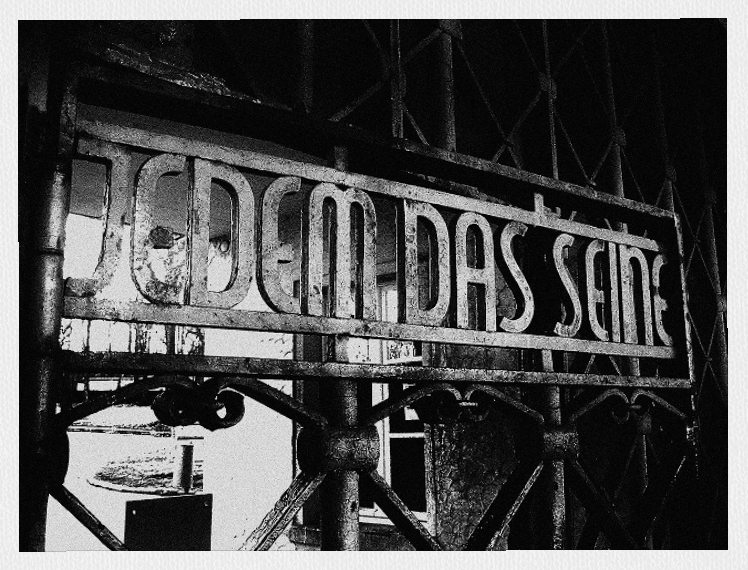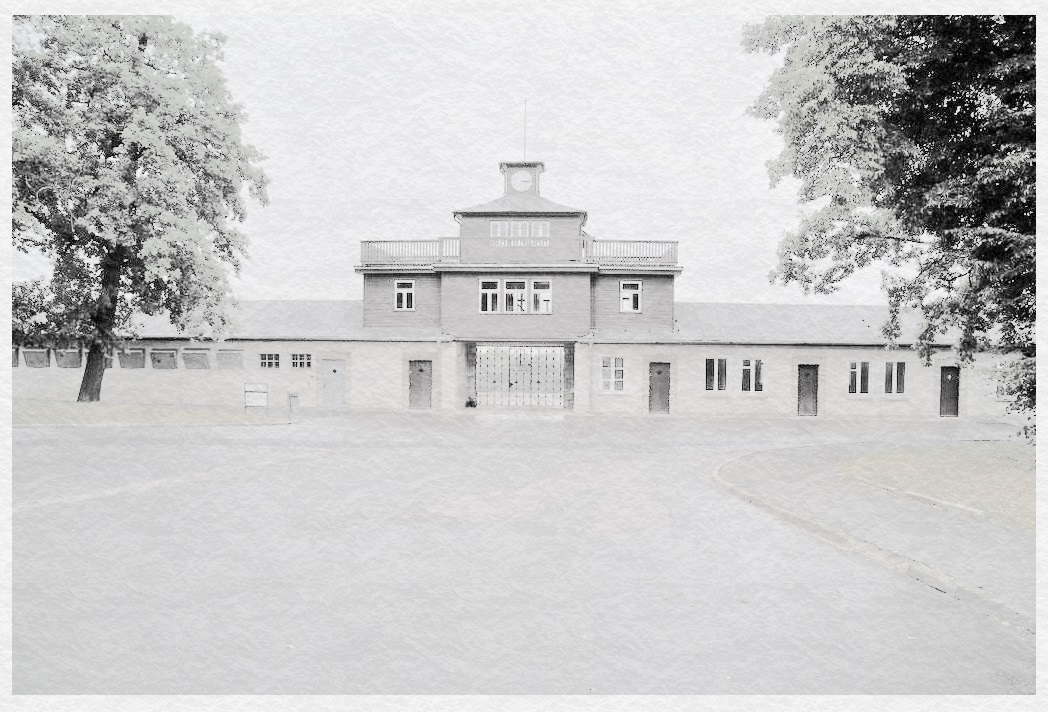Difference between revisions of "Buchenwald concentration camp"
(→[[]] Blue Triangle) |
(→[[]] Purple Triangle) |
||
| Line 82: | Line 82: | ||
<span style="color:#696969;"> {} | <span style="color:#696969;"> {} | ||
| − | ==== [[]] <span style="color:#696969;"><u>'''Purple Triangle'''</u> ==== | + | ==== [[File:Wraith Purple Triangle Logo.jpg]] <span style="color:#696969;"><u>'''Purple Triangle'''</u> ==== |
<span style="color:#696969;"> {} | <span style="color:#696969;"> {} | ||
Revision as of 14:16, 23 June 2014
Contents
Quote

"Jedem das Seine" is a German proverb meaning "to each his own" or "to each what he deserves." Used as it was by the Nazis, the inmates could only read this slogan once they were trapped inside the camp and the gate to freedom has clanged shut.
Appearance
Climate
Districts
- -- Appellplatz
- -- Block 45
- -- Block 46
- -- Buchenwald Camp Brothel
- -- Büro des Kommandanten: (Office of the Commandant)
- -- Konzentrationslager Buchenwald zoologischen Gärten: (Buchenwald concentration camp zoological gardens)
- -- Buchenwald Memorial Park
- -- Buchenwald Bell Tower Memorial
- -- Crematorium
- -- Kinobaracke: (cinema)
- -- Inmates' canteen
- -- Little Camp
- -- Rail-station
- -- Sonderlager für sowjetische Kriegsgefangene: (Special camp for Soviet PoWs)
- -- SS barracks complex
- -- Stables & Riding Academy
- -- Storehouse
- -- The Quarry
- -- Verwaltungsgebäude: (Camp Administration building)
- -- Watchtower
Economy
Geography
History
In 1937, the Nazis constructed Buchenwald concentration camp, near Weimar, Germany. Embedded in the camp's main entrance gate is the slogan Jedem das Seine (literally "to each his own", but figuratively "everyone gets what he deserves”). The camp was operational until its liberation in 1945. Between 1945 and 1950, it was used by the Soviet Union as an NKVD special camp for Germans. On January 6, 1950, the Soviets handed over Buchenwald to the East German Ministry of Internal Affairs.
The camp was to be named K. L. Ettersberg, but this was changed to Buchenwald ("beech forest"), since Ettersberg carried too many associations with Goethe, who strolled through the woods (his lover Charlotte von Stein lived there) and supposedly wrote his "Wanderer's Nightsong", or, alternately, the Walpurgisnacht passages of his Faust under the oak tree which remained in the center of the camp after the forest was cleared for its construction: this tree is the famous Goethe Oak. Quickly the fate of the oak became associated with the fate of Germany: if the one was to fall, so was the other.
Between April 1938 and April 1945, some 238,380 people of various nationalities including 350 Western Allied prisoners of war (POW)s were incarcerated in Buchenwald. One estimate places the number of deaths at 56,000.
During an American bombing raid on August 24, 1944 that was directed at a nearby armaments factory, several bombs, including incendiaries, also fell on the camp, resulting in heavy casualties amongst the prisoners (2,000 prisoners wounded & 388 killed by the raid).
Today the remains of the camp serve as a memorial and permanent exhibition and museum administered by the Buchenwald and Mittelbau-Dora Memorials Foundation, which also oversees the camp's memorial at Mittelbau-Dora.
Population
Zero - living. 56,000 dead. And 57 Restless.
Concentration Camp Lexicon
Appellplatz: is a compound German word meaning "roll call" (Appell) and "area" or "place" (Platz). In English, the word is generally used to describe the location for the daily roll calls in Nazi concentration camps.
Lagerordnung: was the "Disciplinary and Penal Code", first written for Dachau concentration camp, which became the uniform code at all SS concentration camps in the Third Reich on January 1, 1934. Also known as the Strafkatalog (Punishment Catalogue), it detailed the regulations for prisoners. SS guards were instructed to report violations of the code to the commandant's office. The Concentration Camps Inspectorate was responsible for execution of the resulting punishment, which was carried out without verification of the allegations or any possibility of vindication.
Muselmann: Muselmann (pl. Muselmänner, from the German, meaning Muslim) was a derogatory term used among captives of World War II Nazi concentration camps to refer to those suffering from a combination of starvation (known also as "hunger disease") and exhaustion and who were resigned to their impending death. The Muselmann prisoners exhibited severe emaciation and physical weakness, an apathetic listlessness regarding their own fate, and unresponsiveness to their surroundings.
Selektion: The selection of inmates for execution or slave labor at an extermination or concentration camp.
Maps
http://old.wikimapia.org/#lat=51.0205555&lon=11.2490502&z=16&l=0&m=b&v=8
Todesmarsch (Death March)
Die Unruhigen Toten (the Restless dead)
Camp Factions
 Red Triangle
Red Triangle
{As a red inverted triangle, the badge was worn by political prisoners: Communists, liberals, anarchists, Social Democrats, Freemasons, and other opposition party members also wore a red triangle.}
 Green Triangle
Green Triangle
{ "professional criminals" (convicts, often working in the camps as Kapos).}
 Blue Triangle
Blue Triangle
{}
 Purple Triangle
Purple Triangle
{}
[[]] Pink Triangle
{}
[[]] Black Triangle
{}
[[]] Brown Triangle
{}
[[]] Uninverted Red Triangle -- Allies
{}
[[]] Specters
{}
- -- Kommando 99 -- The Execution Squad
- -- Ilse Koch -- Die Hexe von Buchenwald (The Bitch of Buchenwald)
Websites
http://en.wikipedia.org/wiki/Buchenwald_concentration_camp
http://picsbox.biz/key/buchenwald
http://en.wikipedia.org/wiki/Female_guards_in_Nazi_concentration_camps
http://blogs.reuters.com/photographers-blog/2013/04/16/kz-two-letters-literally-hell/
http://en.wikipedia.org/wiki/Buchenwald_Trial
http://en.wikipedia.org/wiki/Glossary_of_Nazi_Germany {Glossary of Nazi Terms}
http://en.wikipedia.org/wiki/Nazi_concentration_camp_badges#Table_of_camp_inmate_markings -- Segregation based on color and shape of badge.
Errata
dem Totenwald
